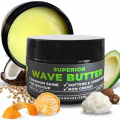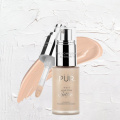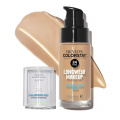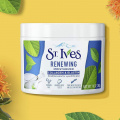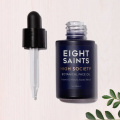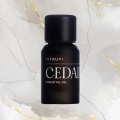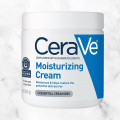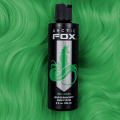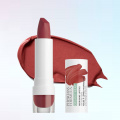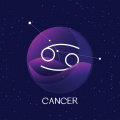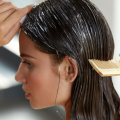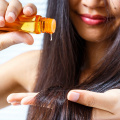How to Get Rid of Red Spots on Skin Naturally
Learn all about how to get rid of red spots on skin using the goodness of home remedies, and bid adieu to itchy spots.
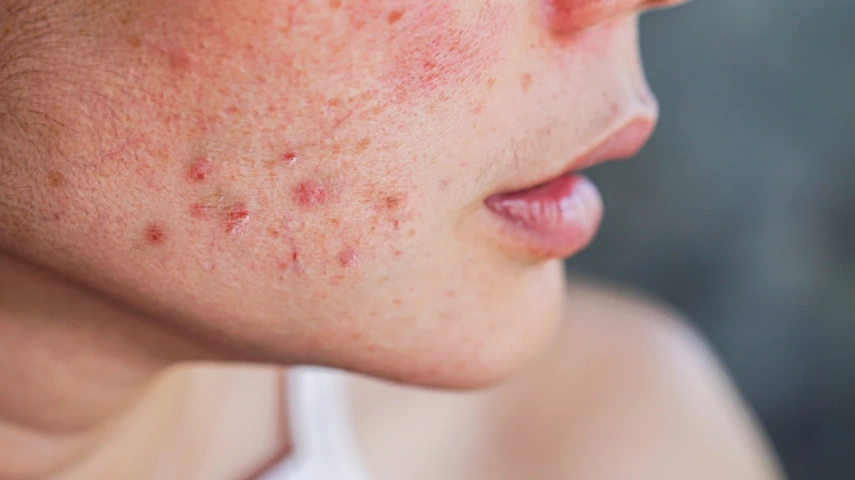
Everyone dreams of having flawless, spot-free skin. But this dream seems like a far-fetched reality for those who face the problem of red spots. But don't fret at all, as we are here to help you figure out how to get rid of red spots on skin easily using home remedies. But before that, let's unravel the mystery behind red spots and understand their meaning and causes.
Red spots are marks on your skin that can have multiple causes. They are filled with pus and can be itchy and painful. Usually, they can be treated properly using natural remedies, but medical intervention might be required if the problem doesn't go away.
Before trying any remedy to eradicate red spots on the skin, you must know its cause. Read on to learn more!
What Causes Red Marks on Face & How to Get Rid of Red Spots on Skin?
There are a variety of medical and nonmedical conditions that may cause red spots on the skin, including:
1. Heat Rash
As the name suggests, heat rash usually occurs during the summer season when the weather is extremely hot or humid. This condition has many names including miliaria, prickly heat, or sweat rash, and is characterized by small red spots where sweat gets accumulated. Heat rashes usually occur on the back, chest, knees, waist, and armpits (1).
2. Ringworm
Ringworm of the body is medically termed tinea corporis. It's a fungal skin infection that causes itchy and painful red ring-shaped rashes. It may appear on your neck, arms, and legs, but can spread to other parts of the body as well. It's highly contagious and doesn't go away unless the fungus is killed. If you have a red spot that looks like ringworm, contact a doctor immediately (2).
3. Drug Rash
Drug rashes occur as a result of an allergic reaction to a medication. These rashes can range from small bumps to scaling rashes that are itchy. They can be either mild or severe and mostly resolve on their own. But, if the condition is severe, you may need to consult a doctor (3).
4. Contact Dermatitis
This is one of the most common causes of dark red spots on skin. It's characterized by itchy, red, and bumpy spots on the skin. It can also cause swelling and make your skin dry. It usually happens when the skin gets in contact with irritants or allergens (4).
5. Psoriasis
Psoriasis is an inflammatory skin condition caused by injury, medications, infection, environmental factors, or stress. It causes itchy and red rashes that most commonly appear on knees and elbows (5).
6. Pityriasis Rosea
This is a skin condition that usually affects people between the ages of 10 and 35. Although it's not a serious condition, it can be quite annoying. Usually, people dealing with this condition will notice a large spot on their back, chest, or torso, followed by small scaly and itchy spots that look like a ring. They can be caused by viruses, bacteria, or spirochetes (a group of spiral-shaped bacteria that causes various diseases like syphilis, Lyme disease, and relapsing fever) (6), (7).
7. Petechiae
These are small red, non-blanching spots (those that don’t fade even if one applies pressure on them) on the skin that don't itch. This is not a condition but occurs as a symptom of an allergy, a bleeding disorder, trauma, or an infection. If they occur and are accompanied by a fever, then seek medical attention (8).
8. Swimmer's Itch
If you have been swimming in water that's infested with parasites, there are chances you can get swimmer's itch. This skin condition is also known as cercarial dermatitis and presents as small, itchy red blisters on the skin. Generally, they don't need medical attention and go away on their own in a week. But, if the symptoms don't go away, don't shy away from consulting a doctor (9).
9. Atopic Dermatitis
Atopic dermatitis is a common chronic skin condition that can occur at any age, though it usually affects babies and children. It's characterized by red, scaly rashes that quite commonly occur on the neck, behind the knees, ear, elbows, or wrists. It also causes the skin to become dry and cracked (10).
10. Lichen Planus
This is an inflammatory skin condition for which scientists are still not able to find the relevant cause. It causes red, raised bumps usually on ankles, wrists, and the back, but it can occur anywhere. These bumps can also make the skin dry, scaly, rough, and itchy. Although there is no proper cure for the condition, one can manage symptoms with a proper treatment plan (11).
11. Acne Vulgaris
Most often than not, the tiny red spots on your skin are nothing but acne or pimples. There are various types of acne, and its severity ranges from mild to moderate to severe. Mild acne can easily be treated at home but if your acne is severe, you might need help from a dermatologist (12).
These were some of the major causes of red spots on the skin. Many times, you might also experience a few signs and symptoms along with red spots. Read on to know more!
Signs And Symptoms That May Accompany Red Spots
Red spots on skin may or may not be accompanied by the following symptoms, depending on the underlying cause:
- Itchy skin
- Dry skin
- Flaky skin
- Red bumps
- Swelling of the skin
- Burning sensation
- Pus coming out of red spots
- Fever
If your red spots are accompanied by fever, you must pay a visit to a doctor. In other cases, you may benefit from some natural tips on how to get rid of red spots on skin that we are going to explain below.
How to Get Rid of Red Spots on Skin At Home?
There are various home remedies for red spots on the face. Make sure to do a patch test before trying these methods to reduce red spots on your face.
1. Aloe Vera
Ingredients to Be Used:
- An aloe leaf
- Ice tray
How to Prepare
Take an aloe leaf and wash it properly. Then, put the leaf in an upright position so that its yellow content can come out. After half an hour, wash the leaf again and slice it to take out the aloe vera pulp. Blend it in a blender, and transfer it to a clean container. Keep it aside for some time to let the bubbles disappear. Pour it into an ice tray and freeze it. Your aloe vera ice cubes are ready to use! Whenever you need to use them, take out an aloe vera cube, wrap it in a clean cloth, and place it on the affected areas for a few minutes.
If you don't want to get into the hassle of preparing aloe ice cubes at home, you can simply apply fresh aloe vera gel on red spots and rinse it off after half an hour.
Benefits
Aloe vera possesses healing, anti-inflammatory, antiseptic, antiviral, and moisturizing properties, all of which protect our skin from various ailments, including red spots (13). A recent study showed that aloe vera may be helpful in treating a host of conditions including wounds, genital herpes, and psoriasis (14). This may prove to be an effective remedy to get rid of acne redness.
2. Calendula Oil
Ingredients to Be Used:
- 1 tablespoon of aloe vera gel
- 4 to 6 drops of calendula oil
How to Prepare
Take out fresh aloe vera gel from aloe leaf as explained earlier, and mix it with four to six drops of calendula oil. Use a cotton pad to apply this to affected areas, and rinse it off with cold water after 25 minutes.
Benefits
Calendula flowers exhibit strong anti-inflammatory properties and topical application of calendula on the skin is known to heal wounds, rashes, bruises, dermatitis, and boils (15). Aloe vera also treats wounds and psoriasis effectively (14).
Caution: Use of this remedy is not advised for children under six years of age.
3. Jojoba Oil
Ingredients to Be Used:
- A few drops of jojoba oil
- A fresh cotton pad
How to Use
Clean your face properly using a mild cleanser and pat dry. Now pour a few drops of jojoba oil on a cotton pad and place it on the affected areas. Let jojoba oil get immersed into your skin for 30 to 40 minutes, then wash it off using cool water.
Benefits
Jojoba oil improves skin barrier functions, heals wounds, treats inflammation, and prevents the progression of atopic dermatitis (16). According to a study, jojoba oil can also help improve the symptoms of eczema (17). All in all, using jojoba oil is one of the most effective answers if you are wondering how to get rid of red spots from within the comfort of your home.
4. Chamomile Flowers
Ingredients to Be Used:
- A handful of fresh chamomile flowers
- A cup of water
- 1/2 teaspoon of honey
How to Prepare
Bring a cup of water to a boil and add six to eight chamomile flowers to it. Allow it to steep for 20 to 30 seconds. Strain, and allow it to cool. Take two to three tablespoons of chamomile water and mix it with 1/2 teaspoon of raw honey. Pour this onto a cotton pad and apply this to your red spots. Keep this on your skin for about 15 minutes, then wash it off using lukewarm water.
Benefits
If you are still thinking about how to get rid of red spots, then the answer is here. Use chamomile! Chamomile contains α-bisabolol, a powerful substance with highly strong anti-inflammatory properties that may help treat skin inflammation. This property of chamomile may help in the treatment of eczema (18), (19). Research suggests that chamomile may also be beneficial in treating atopic eczema, skin irritations, and inflammation (20). Honey is a nutritious food that has been used for various medicinal purposes for ages. It may help relieve inflammation, improve skin barrier function, and treat atopic dermatitis (21).
5. Colloidal Oatmeal
Ingredients to Be Used:
- 1 tablespoon of colloidal oatmeal
- Water
How to Prepare
Mix a tablespoon of colloidal oatmeal with enough water to make a fine paste. Apply it to the red spots with clean fingers. Leave it on your skin for 15 to 20 minutes, then wash it off using cold water.
Benefits
Colloidal oatmeal has been used forever to improve skin barrier function, provide moisturization to the skin, and keep it healthy (22). According to a study, using colloidal oatmeal topically can help improve the symptoms of atopic dermatitis (23). Also, being rich in antioxidants, and anti-inflammatory properties, colloidal oatmeal extracts can improve the symptoms of dry, rough, and itchy skin, which may help treat redness from acne and other skin conditions (24).
Caution: Before using these home remedies to treat dark spots, it's important to do a patch test on your elbow and see how your skin reacts to it. Moreover, if the red spots persist even after trying these remedies, consider seeking medical attention to find out the underlying cause. However, if your symptoms worsen, consult a doctor immediately.
Conclusion
Red spots on the skin are quite common and are usually caused by swimmers' itch, eczema, dermatitis, and acne. As these problems are mostly caused by bacteria, allergens, or fungal infections, make sure to eat a healthy diet and follow hygiene practices to keep such skin conditions at bay. If you notice red spots on your skin, don't get anxious and try our ultimate guide on how to get rid of red spots on skin. Use these home remedies to get relief from the symptoms, but seek immediate medical attention if your symptoms don't get better.
Sources:
1. Miliaria
https://www.ncbi.nlm.nih.gov/books/NBK537176/
2. Tinea Corporis
https://www.ncbi.nlm.nih.gov/books/NBK544360/
3. Current Perspectives on Severe Drug Eruption
https://www.ncbi.nlm.nih.gov/pmc/articles/PMC8286049/
4. Contact Dermatitis
https://www.ncbi.nlm.nih.gov/books/NBK459230/
5. Psoriasis
https://www.ncbi.nlm.nih.gov/pmc/articles/PMC4109580/
6. Pityriasis Rosea: An Update on Etiopathogenesis and Management of Difficult Aspects
https://www.ncbi.nlm.nih.gov/pmc/articles/PMC4966395/
7. Pityriasis Rosea: An Updated Review
https://pubmed.ncbi.nlm.nih.gov/32964824/
8. Petechiae
9. Swimmer’s Itch: Incidence and Risk Factors
https://www.ncbi.nlm.nih.gov/pmc/articles/PMC1448328/
10. Atopic Dermatitis: Natural History, Diagnosis, and Treatment
https://www.ncbi.nlm.nih.gov/pmc/articles/PMC4004110/
11. Lichen Planus
https://www.ncbi.nlm.nih.gov/books/NBK526126/
12. Acne Vulgaris
https://www.ncbi.nlm.nih.gov/books/NBK459173/
13. ALOE VERA: A SHORT REVIEW
https://www.ncbi.nlm.nih.gov/pmc/articles/PMC2763764/
14. The Effect of Aloe Vera Clinical Trials on Prevention and Healing of Skin Wound: A Systematic Review
https://www.ncbi.nlm.nih.gov/pmc/articles/PMC6330525/
15. Medicinal plants used in treatment of inflammatory skin diseases
https://www.ncbi.nlm.nih.gov/pmc/articles/PMC3834722/
16. Anti-Inflammatory and Skin Barrier Repair Effects of Topical Application of Some Plant Oils
https://www.ncbi.nlm.nih.gov/pmc/articles/PMC5796020/
17. Jojoba Oil: An Updated Comprehensive Review on Chemistry, Pharmaceutical Uses, and Toxicity
https://www.ncbi.nlm.nih.gov/pmc/articles/PMC8197201/
18. Effect of German chamomile oil application on alleviating atopic dermatitis-like immune alterations in mice
https://www.ncbi.nlm.nih.gov/pmc/articles/PMC2833428/
19.α-(-)-bisabolol reduces pro-inflammatory cytokine production and ameliorates skin inflammation
20. Chamomile: A herbal medicine of the past with bright future
21. Honey is potentially effective in the treatment of atopic dermatitis: Clinical and mechanistic studies
https://www.ncbi.nlm.nih.gov/pmc/articles/PMC5418133/
22. Colloidal Oatmeal (Avena Sativa) Improves Skin Barrier Through Multi-Therapy Activity
https://pubmed.ncbi.nlm.nih.gov/27272074/
23. Mechanism of action and clinical benefits of colloidal oatmeal for dermatologic practice
https://pubmed.ncbi.nlm.nih.gov/20865844/
24. Anti-inflammatory activities of colloidal oatmeal (Avena sativa) contribute to the effectiveness of oats in treatment of itch associated with dry, irritated skin
https://pubmed.ncbi.nlm.nih.gov/25607907/
25. Stress and psoriasis
https://pubmed.ncbi.nlm.nih.gov/29729012/
26. Cutaneous lesions and vitamin B12 deficiency
https://www.ncbi.nlm.nih.gov/pmc/articles/PMC2294086/
27. Diagnostic value of oral “beefy red” patch in vitamin B12 deficiency





 JOIN OUR WHATSAPP CHANNEL
JOIN OUR WHATSAPP CHANNEL



































